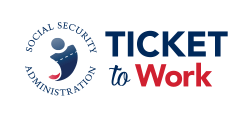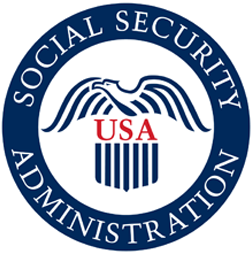Partnerships: The Key to Success
State VR agencies across the country are discovering the benefits of partnering with ENs and non-EN VR vendors to ensure that beneficiaries with disabilities have access to a continuum of pre-employment, placement, and ongoing post-employment support to increase the likelihood of long-term employment success. State agencies have implemented a variety of informal arrangements and formal agreements to:
- Create coordinated systems of services designed to address the needs of beneficiaries throughout the employment process.
- Establish structured referral mechanisms (formal and informal) to assist beneficiaries to quickly and easily transition from VR's pre-employment and placement services to the ongoing post-employment support provided by ENs and non-EN VR vendors.
- Facilitate the sharing of information on beneficiary service needs, employment outcomes, earnings information, etc. based on the written consent of the beneficiaries being served.
- Expand and Improve communications among service providers (e.g., through designated Ticket liaisons, in-service training, cross-agency training, co-sponsored events, etc.).
- Increase beneficiary access to information on options for obtaining services, related community resources, Social Security work incentives, Work Incentives Planning and Assistance services, the Protection and Advocacy Services for Beneficiaries of Social Security program, etc.
- Increase the number of beneficiaries achieving economic self-support by ensuring access to ongoing employment support after job placement.
- Establish systems of revenue sharing and/or post-employment benchmark payments to create incentives for partnering organizations.
- Increase the revenue received from Social Security for both the State VR agency and participating ENs. Informal partnerships range from referring beneficiaries to the Choose Work website and researching ENs serving the local community, to providing beneficiaries with lists of ENs serving the area. More formal arrangements may involve using different mechanisms such as written referrals to transition beneficiaries from VR services to EN services.
Written interagency agreements range from simple statements about working together to clearly delineated referral arrangements and agreements that require the VR agency to refer beneficiaries back to the ENs that originally referred them to VR. A few include commitments to provide post-employment benchmark payments to a partnering EN when the EN's services result in beneficiaries achieving Substantial Gainful Activity level earnings for designated periods of time. Unfortunately, written agreements involving state agencies must comply with a variety of provisions in state laws and regulations, and requirements of the state's administrative procedures act. This means that State VR agencies often take months - if not a year or more - to negotiate a written agreement and get it approved by legal counsel. For example, interagency agreements involving state agencies are required to include Equal Employment Opportunity and Affirmative Action statements. These lengthy negotiation processes can create barriers to partnerships with private service providers.
While there are many variations in the written agreements that have been developed to date, most fall into three basic categories:

